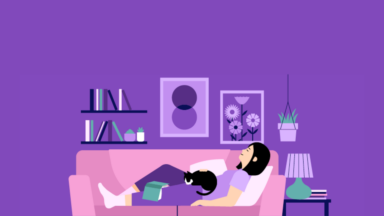
A good night’s sleep is essential for our physical and mental well-being, but for those living with Restless Leg Syndrome (RLS), peaceful slumber can be a challenge. RLS is a neurological disorder characterised by an irresistible urge to move the legs, often accompanied by uncomfortable sensations. This condition can significantly disrupt sleep, leaving many individuals wondering how to find relief. In this blog post, we’ll explore the connection between Restless Leg Syndrome and sleep, its impact on your nightly rest, and effective strategies to manage the condition.
Understanding Restless Leg Syndrome
Restless Leg Syndrome (RLS) is a condition that affects the nervous system, leading to uncomfortable sensations in the legs and an irresistible urge to move them. These sensations typically occur during periods of inactivity, such as when sitting or lying down, and can be particularly bothersome at bedtime.
In most cases, there is no obvious cause of restless legs syndrome; this is known as idiopathic or primary restless legs syndrome, and it can run in families. Some neurologists believe the symptoms of restless legs syndrome may have something to do with how the body handles dopamine, a chemical involved in controlling muscle movement which may be responsible for the involuntary leg movements associated with restless legs syndrome.
The Connection Between RLS and Sleep
RLS often disrupts the sleep of those affected by it in several ways:
Difficulty Falling Asleep: The discomfort and urge to move the legs can make it challenging to fall asleep, leading to delayed sleep onset.
Frequent Awakenings: Individuals with RLS may experience multiple nighttime awakenings, further fragmenting their sleep.
Reduced Sleep Duration: RLS can lead to overall reduced sleep duration, leaving individuals feeling fatigued during the day.
Daytime Sleepiness: The sleep disruptions caused by RLS can result in daytime sleepiness, decreased alertness, and difficulty concentrating.
Managing RLS for Better Sleep
If you’re living with RLS and struggling to get a good night’s sleep, you might want to consider the following strategies for relief:
Consult your GP: If you think you have RLS but haven’t yet spoken to a doctor, you might want to start by speaking with your GP or a sleep specialist to diagnose and manage your RLS. They can recommend treatments tailored to your needs.
Medications: If your symptoms are more severe, you may need medication to regulate the levels of dopamine and iron in your body. If restless legs syndrome is caused by iron deficiency anaemia, iron supplements may be all that’s needed to treat the symptoms.
Lifestyle Adjustments: Certain lifestyle changes can help manage RLS, such as reducing caffeine and alcohol intake, regular exercise, and practising relaxation techniques like yoga and meditation.
Warm Baths and Massages: Soaking in a warm bath and receiving leg massages before bedtime can help relax leg muscles and ease discomfort.
Maintain Good Sleep Hygiene: Establishing a consistent sleep schedule and practising good sleep hygiene can help improve sleep quality despite RLS.
In summary, Restless Leg Syndrome can significantly impact your sleep quality and overall well-being. If you’re experiencing symptoms of RLS, it’s essential to seek a diagnosis and treatment from your GP. With the right approach, you can effectively manage RLS and enjoy more peaceful, restful nights.
If RLS causes you persistent sleep difficulties, consider CBT for insomnia (CBT-I), a therapy that addresses the root causes of sleep problems. CBT-I is a highly effective and non-drug treatment for insomnia. It helps change negative thought patterns and behaviours related to sleep. Sleepio is a CBT-I treatment that works with you to develop a personalised insomnia treatment plan, empowering you to challenge negative thought patterns, establish healthy sleep habits, and enjoy restful nights of sleep.

Here’s our latest

Is It Dangerous To Take Sleeping Tablets Every Night?
In our fast-paced lives, getting a good night’s sleep can be a challenge. Many people turn to sleeping tablets to…

Diazepam and Insomnia
Diazepam, also known as Valium, is a type of medication called a benzodiazepine that is commonly used to treat anxiety…

Chronic Fatigue Syndrome and Sleep
A good night’s sleep should leave you feeling refreshed, but for some people, chronic fatigue syndrome and insomnia turn this…


